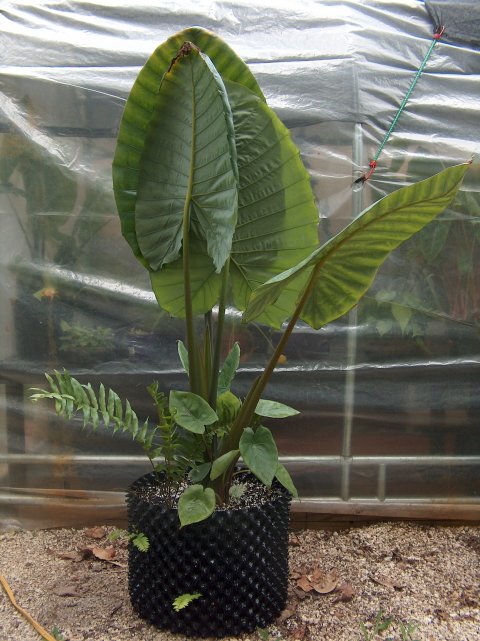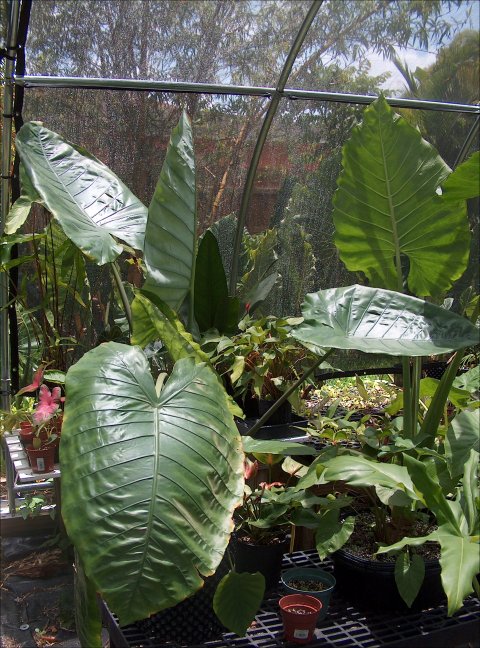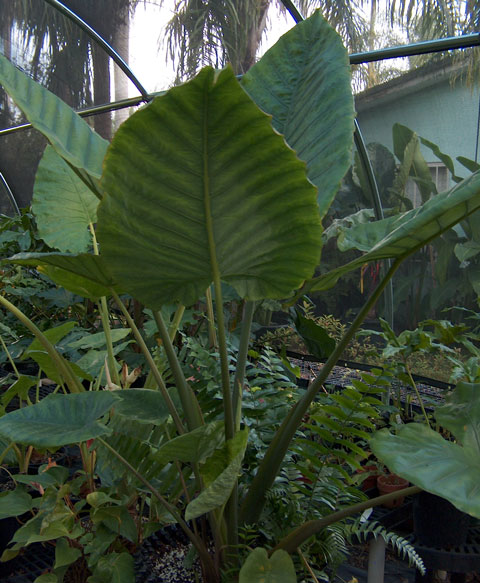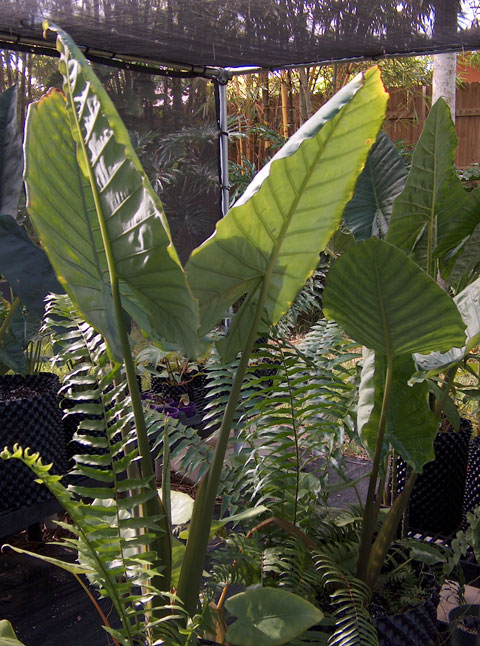Alocasia robusta
Fern Trial update

In native habitat pictures, we observed ferns that looked like Nephrolepis biserrata growing in association with Alocasia robusta, and reasoned that, perhaps, the association helped the A. robusta to survive in the wild. To test this idea, we obtained some of the variety known locally as "Macho Fern" and planted one in with a specimen of A. robusta. The picture above shows how dramatically the A. robusta has responded so far when compared with the picture below. This second picture shows an A. robusta growing under the same conditions as the one above, only without the help of the fern. So far, in our experience with A. robusta, the overall look of the plants matches the picture below rather than the one above. The picture above looks more like the way A. robusta plants look in their native habitat.
In my years of attempting to grow A. robusta, and my observations of specimens grown (or attempted) by a number of other skilled persons, I have never seen an A. robusta under cultivation perform as illustrated in the picture above. So the 2007 growing summer will show us if this is indeed the key to growing a truly huge A. robusta in the United States. The event, as it takes place, will be fully documented with pictures on this website.
Since we began this work, we've learned that the most likely reason for the dramatic response is the balancing of the soil moisture levels that the presence of the active fern roots provides. Since the soil does not stay too moist for long, potentially damaging moisture-loving microbes don't have a chance to build up lethal population levels. Additionally, the ferns we thought were Nephrolepis in the native habitat pictures were possibly Diplazium or Athyrium species rather than Nephrolepis. We will be trialing with these ferns as well, but anticipate the results to be similar to that obtained with the Nephrolepis

The photo above shows an A. robusta as it looked before potting it up together with a Macho Fern. The photo below shows what happened after about six weeks with the Macho Fern. Since this picture was taken, the plant has grown an additional foot or more in height and is well on the way to becoming the largest A. robusta I have seen grown in south Florida.

Below are a couple more A. robusta growing together with Macho Ferns; note the upright growth habit of the A. robusta plants. I suggest to anyone wanting to grow A. robusta that they not attempt it unless they add a Nephrolepis fern to the pot with it.

Interesting, to say the least! Work involving these ferns and other species of Alocasia suggests that the association may be beneficial for Alocasias other than A. robusta. Additionally, I am getting results with other species/varieties of Nephrolepis, including one that sprung up from a wayward spore in a pot with a dying A. chaii; the rhizome of the A. chaii stopped rotting and looks as though it will resprout.
| In the Lab | In the Field | The Species | Fruiting | The Hybrids |